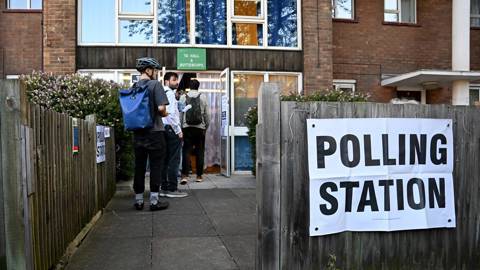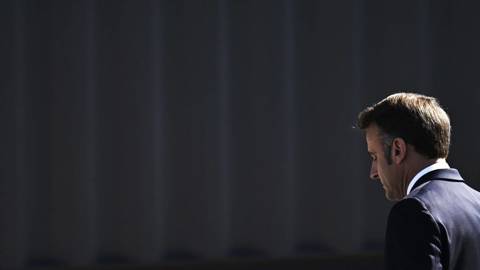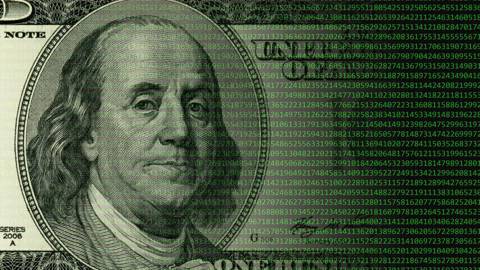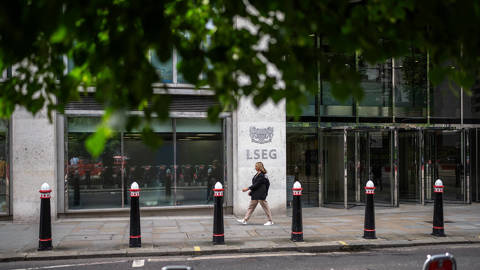For those of us who experienced the Latin American debt crisis of the nineteen eighties, there is the familiar term “original sin”. Original sin is borrowing dollars, as opposed to a currency that you can print. Many Latin countries had (for good reason) nonexistent capital markets. If such governments wanted to borrow, it had to be in dollars.
The reason this is a sin is because at some point you will lose market access and default. Many Latin and Asian countries learned this lesson, and are now quite cautious about taking on dollar debt. They have developed their local debt market and have also built up big dollar reserves.
But there was another response to these crises, which was the panacea of dollarization. The theory of dollarization was that, by converting the entire economy into dollars, the country could import American monetary policy, and provide the economy with a stable non-inflationary medium of exchange.
The most spectacular example of this was Argentina, which dollarized in 1991. Everything was denominated in dollars or in convertible pesos. The central bank abdicated monetary policy to become a currency board. The idea was that 100% of the convertible pesos in circulation would be backed by dollars at the central bank. What could go wrong?
What went wrong was that the Argentine government didn’t play by the rules and ran big fiscal deficits. It financed these deficits with tricks and theft. The system lost credibility, and bank depositors panicked and drove cartloads of dollars across the river to Uruguay. Crucially, the currency board system provided unlimited convertibility from pesos to dollars, which greatly facilitated capital flight. The money supply contracted automatically. Credit evaporated and, in 2001, the government defaulted and repudiated. A big mess, and not a good day for the cause of dollarization. The world learned something.
But Europe learned nothing from the Argentine fiasco. Instead, it decided to repeat the experiment. Europe required every member of the eurozone to surrender its monetary sovereignty and to import the “hard euro” instead. Overnight, Euroland was euroized. Every government was required to borrow in a currency it couldn’t print, and every banking system was required to accept deposits in foreign currency (the euro, printed in Frankfurt by an independent central bank).
The whole idea of dollarization is to impose market discipline on both the government and the banks. Unable to print money, governments would balance their budgets. To maintain depositor confidence, banks would have to remain strong and liquid because they had given up their local sugar daddy in exchange for the cold indifference of the ECB.
Dollarization is an extremely dangerous policy because it depends on market confidence and market access. Supposedly, market discipline will operate to force governments to maintain the confidence of the market. In fact, as Minsky reminds us, confidence can evaporate rapidly, and without an adjustment period: "The revaluation of acceptable debt structures, when anything goes wrong, can be quite sudden and quick. Quite suddenly a panic can develop as pressure to lower debt ratios increases.”
Once a dollarized government or bank has lost market access, there is no escape. The choice is between foreign aid or default and financial collapse. At present, the peripherals have chosen to seek foreign aid, which is keeping them alive, somewhat. But their debt ratios keep going up, which is not sustainable. Like Argentina, they will eventually have to default, repudiate and redenominate.
It was not just Club Med which made the mistake of euroization. France did too, and it too will face the remorseless logic of confidence-sensitivity. France still has the confidence of the bond market, as do her banks. But France’s debt ratio keeps going up, and its banks will face a through asset-quality review this winter. The clock is ticking.










For those of us who experienced the Latin American debt crisis of the nineteen eighties, there is the familiar term “original sin”. Original sin is borrowing dollars, as opposed to a currency that you can print. Many Latin countries had (for good reason) nonexistent capital markets. If such governments wanted to borrow, it had to be in dollars.
The reason this is a sin is because at some point you will lose market access and default. Many Latin and Asian countries learned this lesson, and are now quite cautious about taking on dollar debt. They have developed their local debt market and have also built up big dollar reserves.
But there was another response to these crises, which was the panacea of dollarization. The theory of dollarization was that, by converting the entire economy into dollars, the country could import American monetary policy, and provide the economy with a stable non-inflationary medium of exchange.
The most spectacular example of this was Argentina, which dollarized in 1991. Everything was denominated in dollars or in convertible pesos. The central bank abdicated monetary policy to become a currency board. The idea was that 100% of the convertible pesos in circulation would be backed by dollars at the central bank. What could go wrong?
What went wrong was that the Argentine government didn’t play by the rules and ran big fiscal deficits. It financed these deficits with tricks and theft. The system lost credibility, and bank depositors panicked and drove cartloads of dollars across the river to Uruguay. Crucially, the currency board system provided unlimited convertibility from pesos to dollars, which greatly facilitated capital flight. The money supply contracted automatically. Credit evaporated and, in 2001, the government defaulted and repudiated. A big mess, and not a good day for the cause of dollarization. The world learned something.
But Europe learned nothing from the Argentine fiasco. Instead, it decided to repeat the experiment. Europe required every member of the eurozone to surrender its monetary sovereignty and to import the “hard euro” instead. Overnight, Euroland was euroized. Every government was required to borrow in a currency it couldn’t print, and every banking system was required to accept deposits in foreign currency (the euro, printed in Frankfurt by an independent central bank).
SUMMER SALE: Save 40% on all new Digital or Digital Plus subscriptions
Subscribe now to gain greater access to Project Syndicate – including every commentary and our entire On Point suite of subscriber-exclusive content – starting at just $49.99
Subscribe Now
The whole idea of dollarization is to impose market discipline on both the government and the banks. Unable to print money, governments would balance their budgets. To maintain depositor confidence, banks would have to remain strong and liquid because they had given up their local sugar daddy in exchange for the cold indifference of the ECB.
Dollarization is an extremely dangerous policy because it depends on market confidence and market access. Supposedly, market discipline will operate to force governments to maintain the confidence of the market. In fact, as Minsky reminds us, confidence can evaporate rapidly, and without an adjustment period: "The revaluation of acceptable debt structures, when anything goes wrong, can be quite sudden and quick. Quite suddenly a panic can develop as pressure to lower debt ratios increases.”
Once a dollarized government or bank has lost market access, there is no escape. The choice is between foreign aid or default and financial collapse. At present, the peripherals have chosen to seek foreign aid, which is keeping them alive, somewhat. But their debt ratios keep going up, which is not sustainable. Like Argentina, they will eventually have to default, repudiate and redenominate.
It was not just Club Med which made the mistake of euroization. France did too, and it too will face the remorseless logic of confidence-sensitivity. France still has the confidence of the bond market, as do her banks. But France’s debt ratio keeps going up, and its banks will face a through asset-quality review this winter. The clock is ticking.